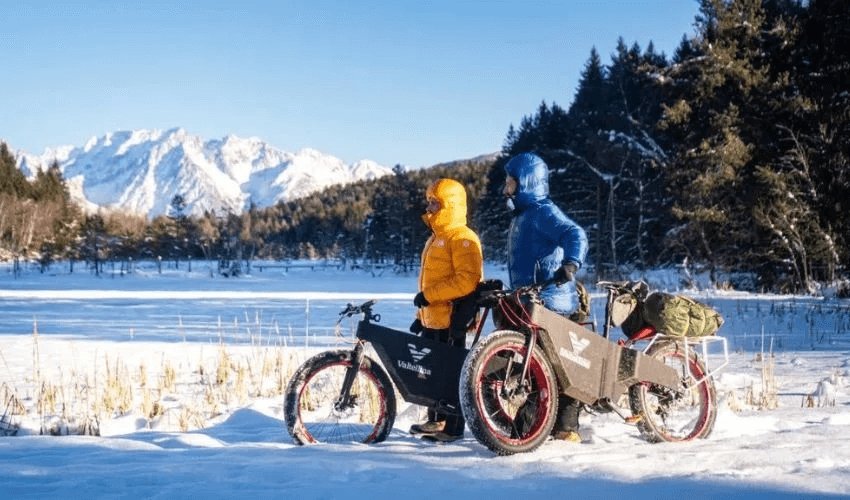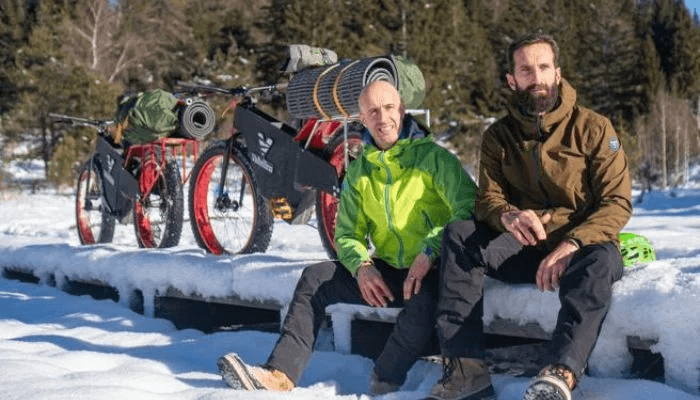
3D printing in cycling, for the production of high performance bikes, is becoming increasingly popular. Just think of the success of Filippo Ganna, who made cycling history thanks to his very personal 3D printed Pinarello Bolide F HR 3D. Or the 3D printed bikes expected to help British athletes at the 2024 Olympics. This time researcher Alex Bellini will try to break records using, for the first time for a trip to Alaska, a fully customized mountain bike with a 3D printed frame .
Bellini traveled for 20 years in the most extreme conditions, exploring the globe to chronicle the world and raise awareness of environmental issues. Now he's decided to try a once-in-a-lifetime adventure, exploring Alaska, Greenland and the Arctic Ocean on an Impact mountain bike. The project, called "Eyes on Ice", started in Italy and will last for three years. The bicycle used was custom made – a 3D printed bicycle made specifically for this mission, designed to fit the needs and physique of the explorer and his companion Alessandro Plona.

Alessandro Plona (from left) and Alex Bellini (from right)
From Alaska to the Arctic with the Impact mountain bike
The Eyes on Ice project hopes to circumnavigate the Earth's polar regions in just three years. Alex Bellini's goal is not only to explore them, but more importantly to draw attention to the environmental problems facing these areas: from melting glaciers to all the other effects of climate change.
For this purpose, the journey of
For this purpose, the journey of Alessandro Plona and Alex Bellini will pass from Anchorage, Alaska to the village of Nome. The route includes a mission to Alaska this year, crossing Greenland in 2025 and then finishing in 2026 with an attempt to cross the Arctic Ocean to the North Pole. In total, the duo will cover 1,800 kilometers between February and March riding the Impact mountain bike: a 3D-printed prototype with a frame made from industrial recycled plastic.
" This is not meant to be just an exploration trip, but with Eyes on Ice we want to take a proactive role in understanding, promoting and protecting polar ecosystems. Our history and our future are closely linked to ice." explained Alex Bellini. In fact, this project completes a journey that began in 2019 with the “10 rivers 1 ocean” project, a mission in which Bellini explored the ten most polluted rivers in the world.

First tests of the 3D printed frame
Creating a 3D printed shock bike
In the communications for the project, in addition to information about the purpose of the mission, of course, great importance was given to the realization of the Impact bike through 3D printing and the desire to contribute to the emergence of a recycling supply chain for polycarbonate, an exceptional material that unlike PE, PP or PET, it is now incinerated after consumption instead of being recycled. Envisioned and assembled by Daniele Rinaldi (Renaldi Telai) based on the requests and technical needs of Alex Bellini and Alessandro Plona, the IMPACT frame was designed and manufactured from scratch by the eXgineering/Gimac/X-engineering team which, led by Francisco Martins Carabetta, continued over the next few weeks to refine form and function based on field tests and the feelings of the two adventurers.
The frame is printed using the RAM (Robotic Additive Manufacturing) 3D printing process, using recycled polycarbonate pellets reinforced in hardness with 30 percent carbon fiber. The unique and sustainable design takes cues from the already well-known New01Bike. The production and refinement of the prototype took about 15 days, interspersed with tests and modifications to make it as reliable, high-performance and comfortable as possible. "Impact is the result of innovation and sustainability: thanks to the polycarbonate, which can be recycled for at least five cycles", Bellini added.

Tested on the snowy slopes of Valtellina, the Impact was also subjected to the climate chamber of the Politecnico di Milano, at -40°C: an environment that mimics the extreme conditions, loads, pedals and bumps of the trail. For those curious about the journey, the two researchers shared a tracking link to let everyone follow their journey live HERE .
0 Comments